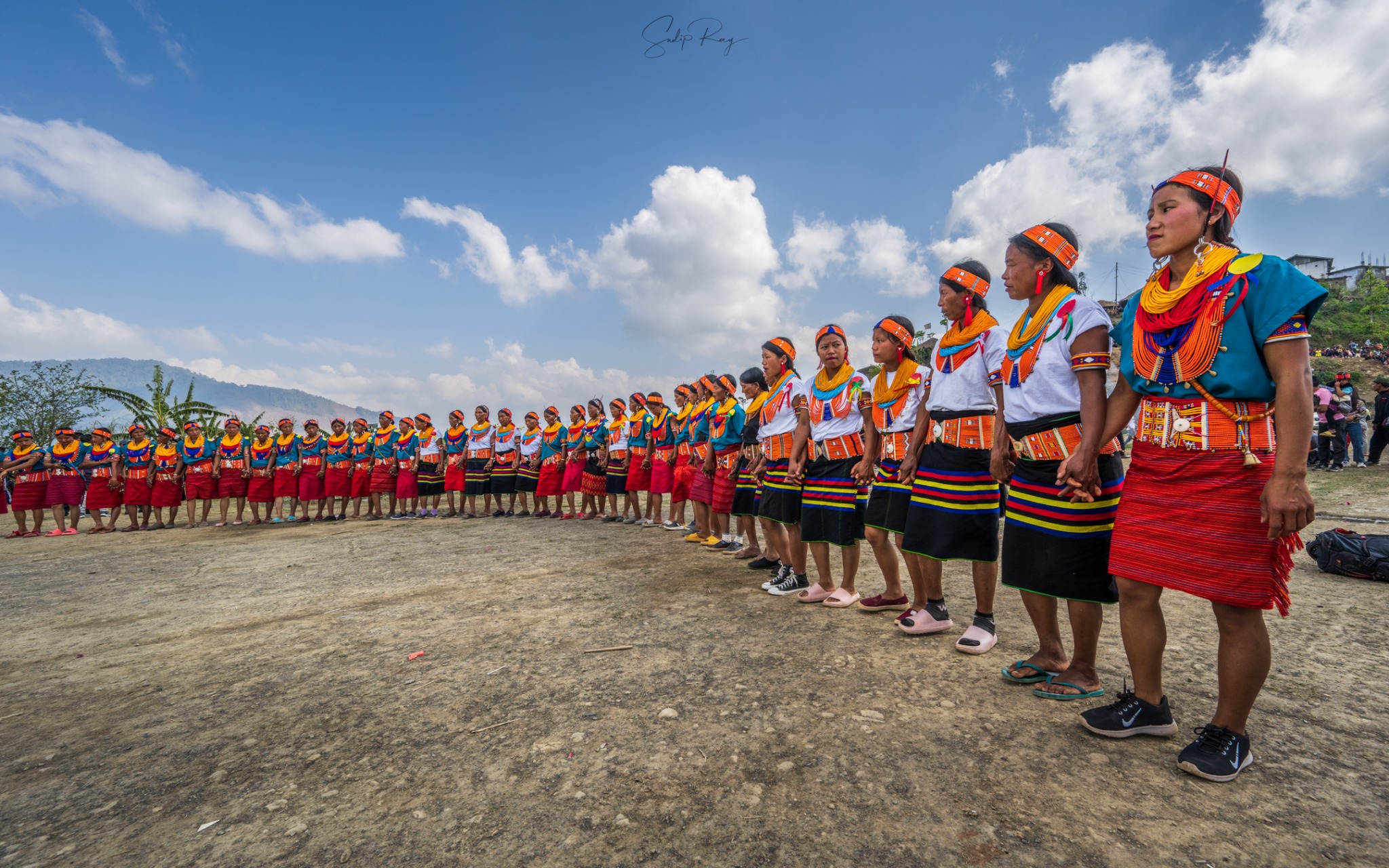
Delving Into the World of Konyak Nagas.
Lush landscape dappled with rolling hills, fierce headhunters and gutsy warriors, and a repository of primitive traditions – Nagaland is truly an enigma in itself. One of the ‘Seven Sisters’ of north-eastern India, it is a land of myriad tribal culture and heritage. From battle sagas to spiritual fables, from hunting tales to tribal folklores – a story seems to be hidden at every juncture, waiting to be discovered by keen ears.
Nagaland is indeed a melting pot of diverse tribal groups, each having their own distinct dialect, tradition and culture. It is home to as many as 17 tribes, of which the Konyak is by far the largest. A Tibeto-Burmese ethnic group, the Konyak tribe is predominantly found in the Mon district of Nagaland. Much alike their other tribal counterparts, the Konyaks are primarily agrarian and pastoral by occupation. They also enjoy hunting, which is a fundamental part of their culture. The Konyak villages are ruled hereditarily by the ‘Angh’ or king, who are identified by the rows of blue beads below their knees. A council comprised of the village elders help the ‘Angh’ to conduct the administration.

It is quite known that every Naga tribe has a heroic past. The tales of their grit and adventure are passed down from generation to generation. And, the Konyaks are no exception to this. However, what sets them apart is their harrowing history of headhunting and the tattooed faces of their warriors. In fact, the mere mention of the word ‘Konyak’ inadvertently reminds us of their menacing practice of headhunting.
Having said that, headhunting is now a thing of the past. In the 1960s, the Indian Government legally banned the practice of headhunting. In addition, the advent of Christianity in Nagaland and the resultant missionary activities sounded the death knell to the custom of headhunting.
Gone are the days when the Konyaks relished battles and headhunting. The violent past was buried along with the burial of those skulls flaunted at the ‘Morungs’ and houses. At present, they have embraced modernization and western education. They now excel in terraced farming, iron smelting, brass, bamboo, and wood works, and make excellent machetes called ‘Yanglau’.
Since the practice of headhunting ceased to exist, only a handful of the erstwhile Konyak headhunters are left to this day. All the surviving headhunters are as old as the hills. Though hale and hearty, most of them are approaching their hundredth birthdays. Needless to say, the generation of Konyak headhunters will soon become history. With them, the legends of the Konyak headhunters will most likely be lost forever.
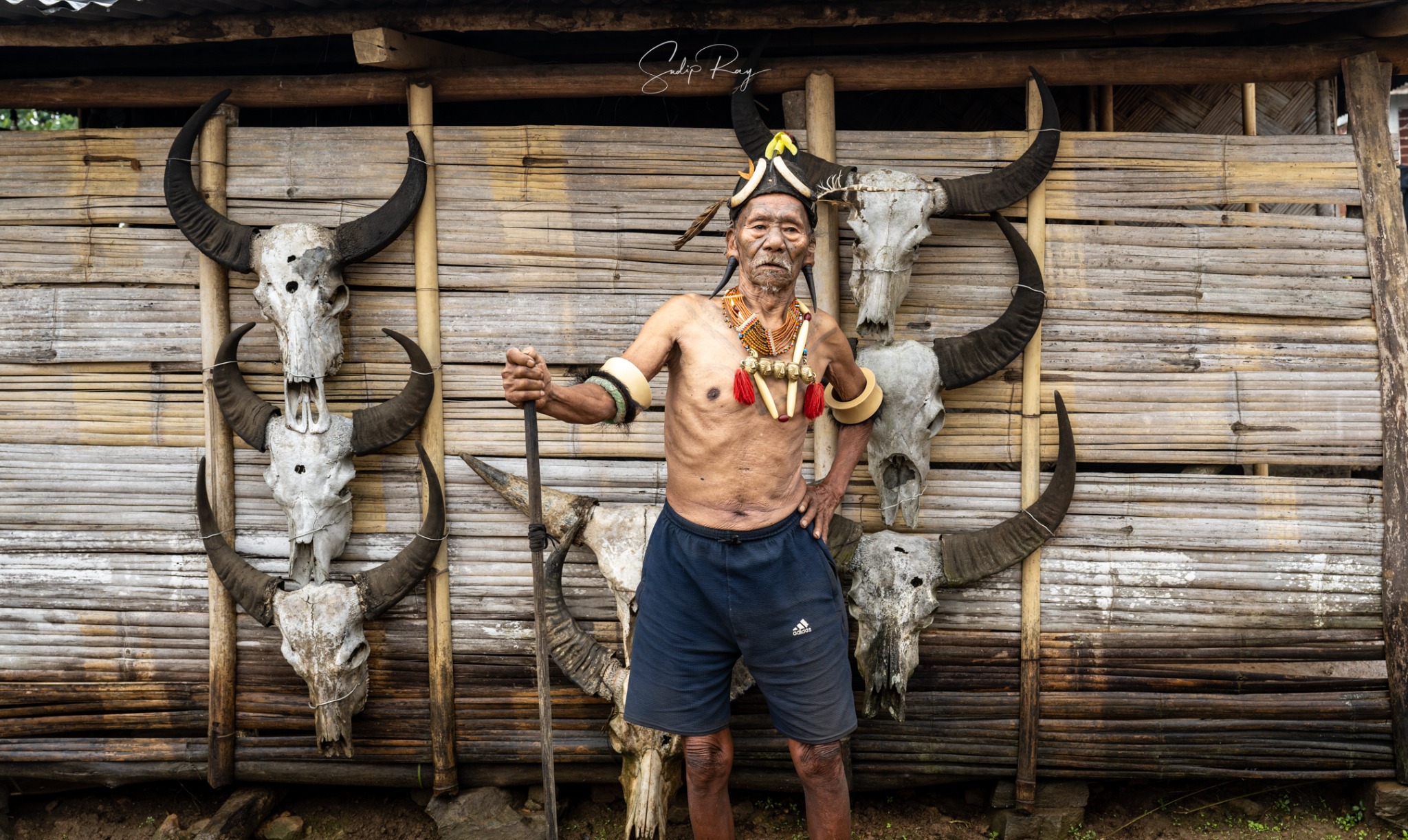
Back in the day, warfare seemed to be the only answer to the conflicts arising among the Konyak villages. Battles were also waged against other tribal groups over lands and cattle. Time and again, the Konyaks attacked the rival villages and beheaded their opponents. They returned victoriously, carrying the enemies’ heads and flaunting them as war trophies. Eventually, the heads were displayed at the ‘Morung’ or tribal community halls. The number of such heads not only manifested the warrior’s prowess but also testified to the village’s strength.
Yet, the Konyaks never considered the enemies’ severed heads as mere mementos. As per the Konyak lore, these skulls possessed spiritual as well as mystical powers which would herald peace and prosperity in the village. Thus, the foes’ hunted heads were considered as totems. Consequently, the Konyak warriors who slayed their enemies’ heads enjoyed special status in the society and were congratulated with unique facial tattoos.
In fact, the art of tattooing is still an indispensable part of the Konyak culture. In Konyak society, tattoos indicate social and marital status as well as personal achievements. Moreover, the designs of tattoos vary from one section to the other. Hence, tattoos differentiate aristocrats and warriors from laymen, married women from unmarried women, and so on. However, in this vast palette of tattoos, the most interesting of all is the facial tattoos of the Konyak headhunters. A Konyak warrior’s body resembles a canvas, as each tattoo inked by skilled hands on their bodies paints a tale of their bravery. After every triumphant return, a Konyak warrior received diamond or lozenge shaped tattoos. However, the prestigious facial tattoos were reserved for the most fearsome headhunters.
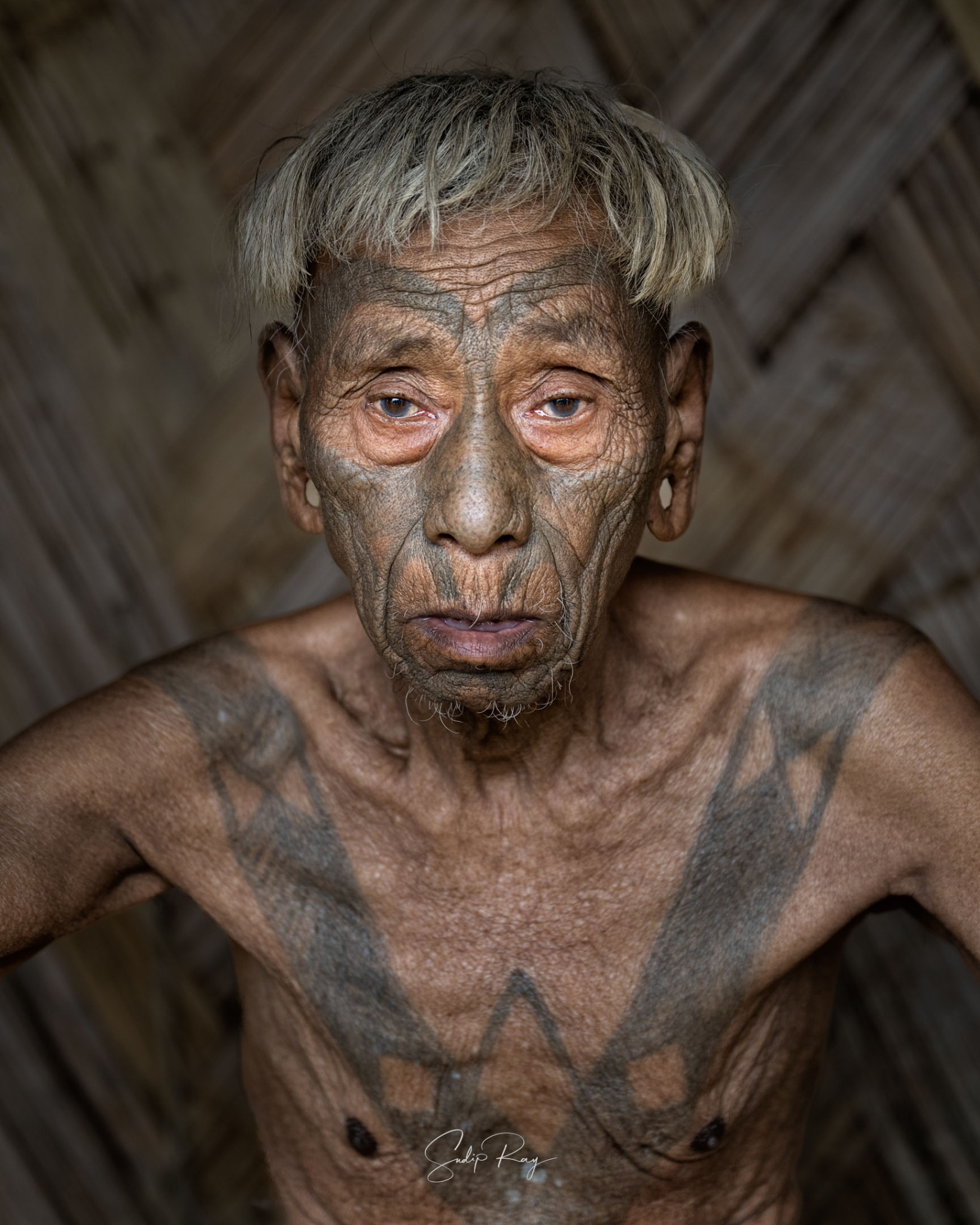
Now, the Konyaks were not just fierce warmongers. Fun and festive, they are also a bunch of jolly good fellows. Thus, jubilant celebration follows after a tribe member receives a new tattoo. Fattest pigs are slaughtered, countless bowls of sticky rice prepared, and shots of homemade rice beer knew no bounds.
No wonder, such a jovial tribe hosts a spell of festivals round the year. The Aoleang Monyu is the foremost among such other festivities. Aoleang is the spring festival of the Konyak Nagas. During this Festival, the Konyaks bid adieu to the departing year together with the cold, harsh winter. They greet the New Year and celebrate the onset of the vibrant spring season. Along with turning over a new leaf, spring further signifies the beginning of a new crop year. So, the Konyaks seek blessings of the ‘Kahwang’ or God upon their land before sowing the seeds.
Like any other Indian festivals, the Aoleang is characterized by the reunion of the family members as also reconnecting with the friends and relations. Gifts are exchanged, tears of joy shed, and elaborate family feasts are arranged. Not only this, the Konyaks also pay homage to their deceased ancestors and pray for their souls. The Konyaks firmly believes that during the Aoleang Monyu, the spirits of their kith and kins descend the realm of the living to bless their descendants.,
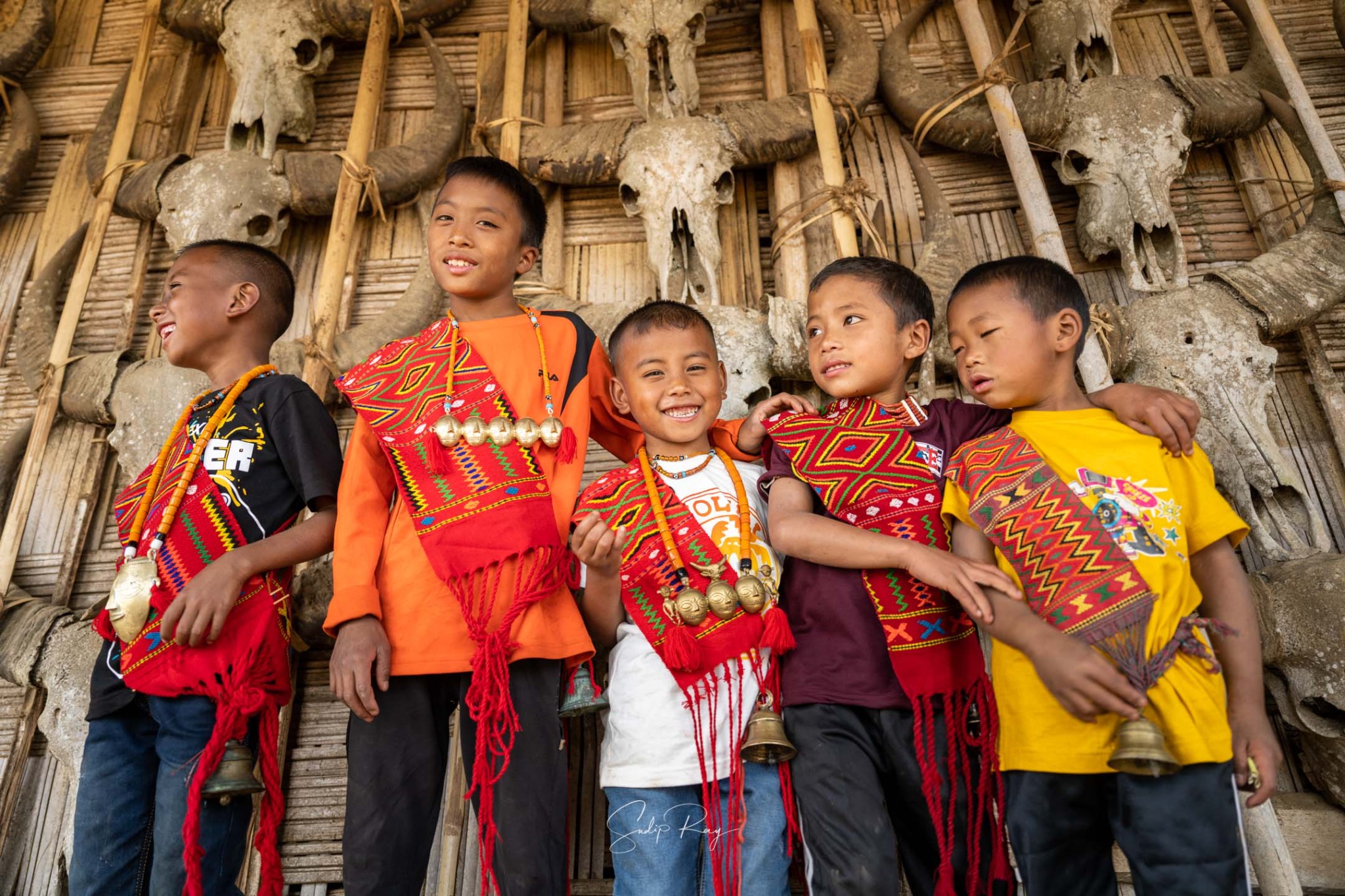
Known as Pongkup Wakfu Nyih, the second day is meant for arranging and assembling the animals which will be slaughtered the next day. The next day, Monyu Nyih or Bonglang Nyih, is meant for grand feast. The food includes traditional pork and beef dishes seasoned with local herbs and spices, rice, and rice beer. The fourth day is called Molik Nyih or Lingnyu Nyih. This is the most joyous day of Aoleang. The Konyaks put on their best dresses and ornaments, and revel in singing and dancing. On the fifth day, referred to as Molai Nyih or Lingha Nyih, the Konyaks offer reverence to their ancestors and prepare a special feast in their honour. On the last day, called Moyan Nyih or Lingshan Nyih, the Konyaks conclude the festival by cleaning their homes along with the villages.
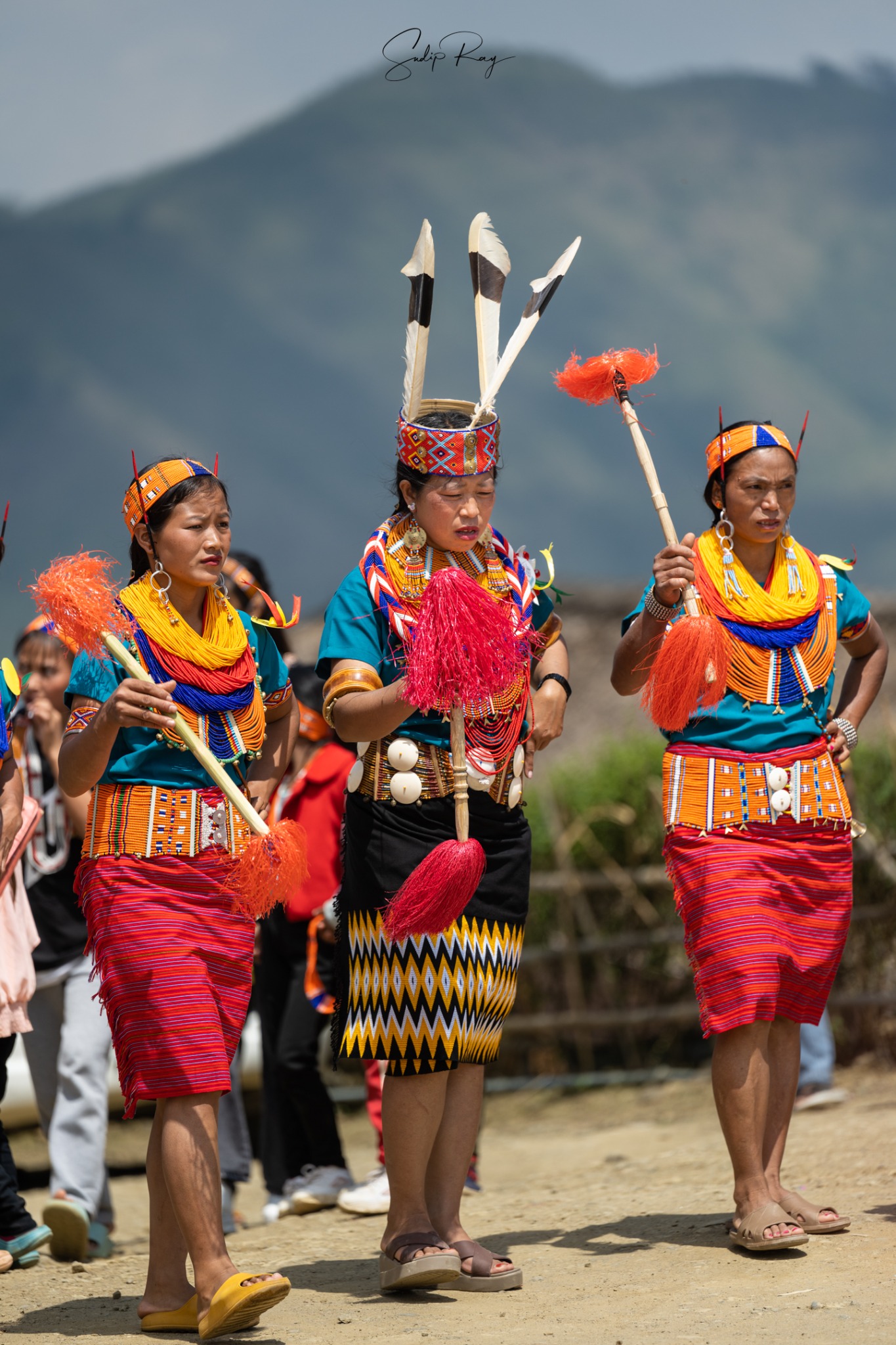
Every year, the six-day long Aoleang festival takes place in the first week of April. The six days has separate significance, while rituals and ceremonies vary each day. The first day, called Moseang Nyih or Hoiyah-Laiphen Nyih, is reserved for making preparations for the upcoming gala. Houses are cleaned, dresses finalized, and jewels polished. The Konyak women prepare the kitchen by stocking up the essentials, while the men clean the ‘Morungs’ and decorate it with tribal emblems. Moreover, every villager participates in cleaning the village and decorates it with festive colors and banners.
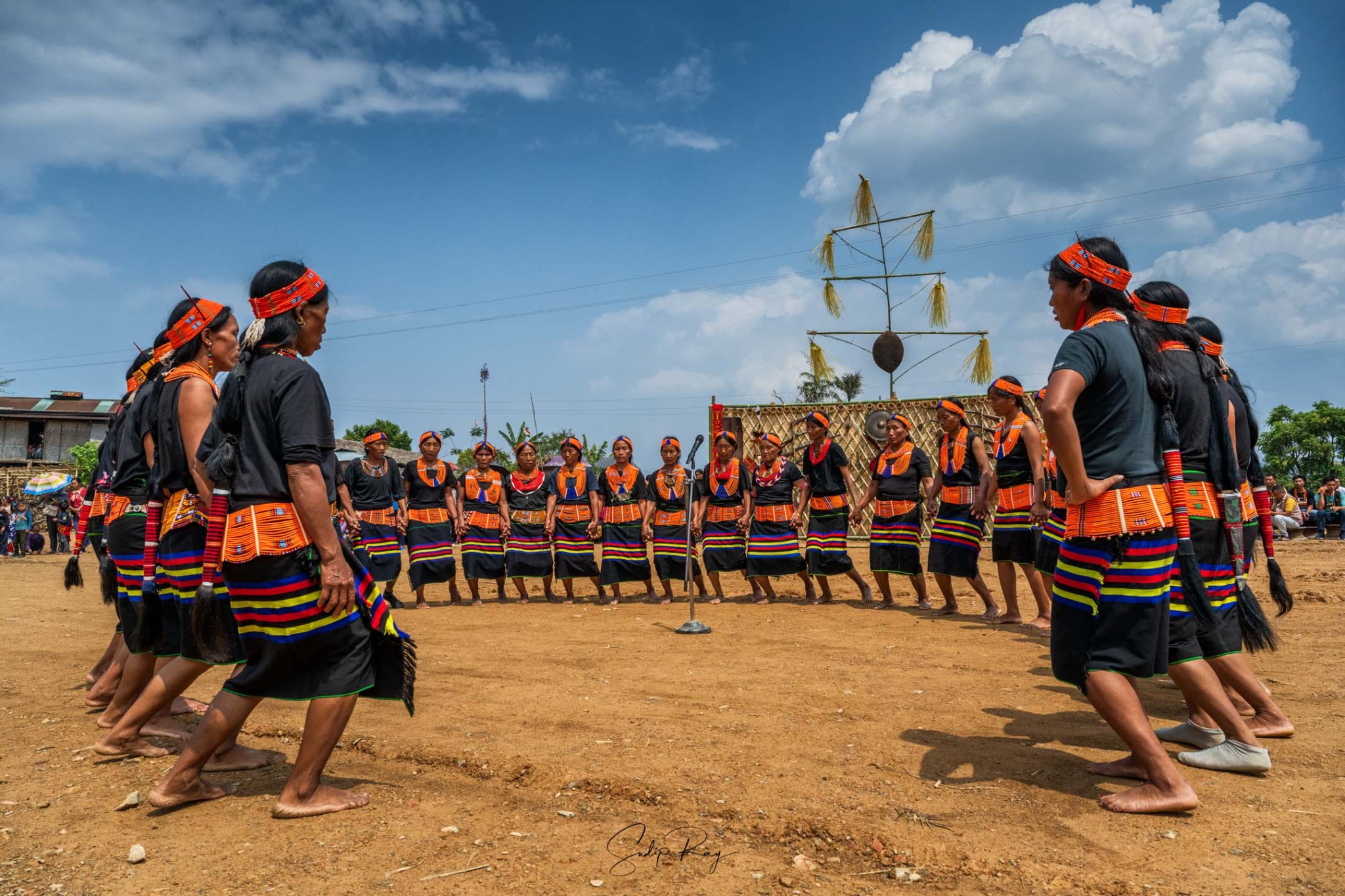
All in all, the Aoleang Festival is a jubilant celebration of spring. Like any other Indian festival, the Konyak men and women put on their traditional outfits during the Aoleang Monyu. Men don conical red headgear embellished with the wild boars’ canines and Hornbill bird’s feather. They also wear brass neckpieces with pendants resembling miniature human heads. Senior members of the tribe wear horn-shaped earplugs. On the other hand, Konyak women sashay in wrap-around skirts, mostly in black shade with green, blue, red, and yellow stripes. They deck themselves up with elaborate headpieces, necklaces, waistbands, and earrings. The ornaments are made of glass and seed beads, and mostly in the vibrant shades of orange, yellow, red, and blue.
Songs are sung in chorus to express gratitude to the God for the previous year’s bountiful harvest. Songs are also sung to invoke the blessings for another prosperous year. The Konyak women hold hands together and dance in circles to the tune of these earthy tones. The men, on the other hand, enact battle scenes while yielding guns and machetes. The Konyaks also partake in amusing sports such as meat-eating competition for men and wool-rolling competition for women. People throng in groups to witness these games. Prizes are also distributed among the winners.
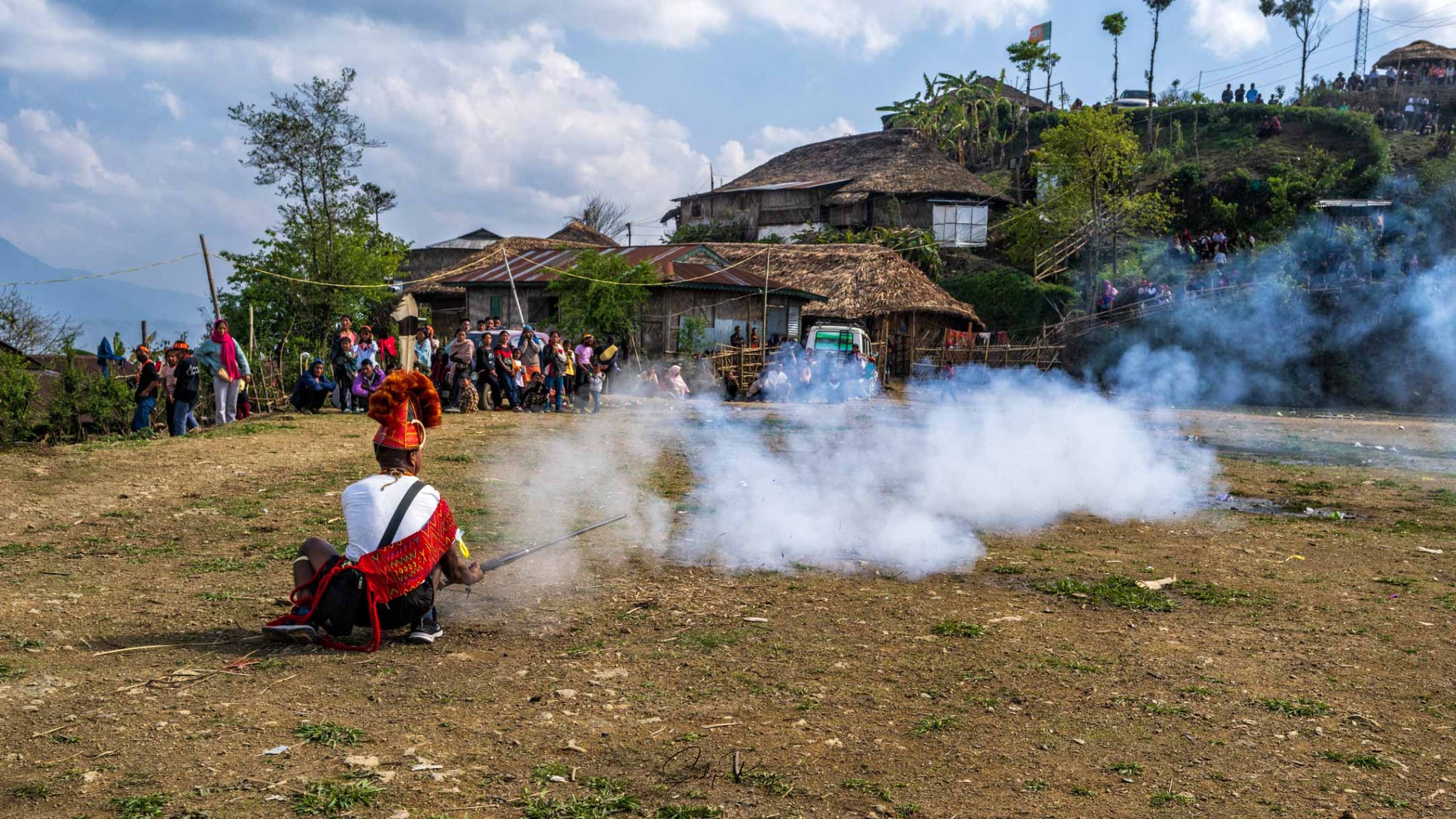
In short, while most of the Konyak Nagas have converted to Christianity, the Aoleang Monyu is still celebrated with such fanfare to uphold the tradition, heritage, culture, and rituals of the past in this modern age.


Post a comment